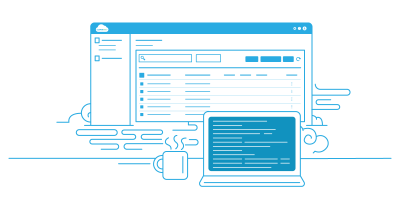Let’s face it… The only thing scarier than accidentally making your Amazon S3 bucket public in 2025 is realizing that anyone can download your entire company’s pet project (or payroll data) while you’re on holiday in Florida. Fear not… With Amazon’s new “External Access Summary” in the S3 Console, auditing S3 security no longer requires caffeine-fueled all-nighters or frantic region-by-region clicking.
Grab a beverage, then let’s breeze through the ultimate (but still human-readable) S3 security audit playbook.
1. Get Your Toolkit Ready
Before you wield your audit kung fu, make sure “IAM Access Analyzer” is switched on in your AWS account. It is the sidekick that powers the External Access Summary for you. Also, check your team’s permissions, because root access shouldn’t be a team sport. Keep it to “least privilege” wherever possible.
2. The Magical External Access Summary
Open up your AWS S3 console and behold: a dashboard that screams (OK, politely lists) which buckets are visible to the public, to other AWS accounts, or possibly…nefarious agents. Instantly see which buckets need a pat on the head and which need a lock-down. Export or screenshot this summary for the audit record. Security pros love evidence almost as much as hackers love an open bucket.
3. Troubleshoot Like a Detective
Review every flagged bucket. If it’s marked for public access, ask:
- Is that intentional? (If your answer is, “Oops,” start fixing.)
- For cross-account buckets, check with business owners.
Sometimes “test” buckets are just production buckets with commitment issues. Don’t forget to confirm detections in every region. Cloud is global, and hacker enthusiasm knows no borders.
4. Test-the-Tester
Want to double-check those AWS tools aren’t napping? Make a test bucket, flip on public or cross-account access, and see if it promptly shows up in External Access Summary. Remove access when you’re done and confirm it disappears. Bonus points: do this in two different AWS regions.
5. Squash Bad Access, Fast
When you spot a bucket flashing the public, act. Apply Block Public Access at the account and bucket level. If a strange account has access, tighten up that bucket policy. For recurring mistakes, set AWS Config rules to flag (and optionally auto-remediate) misconfigurations. Automation stops the oopsies before they go viral.
6. Monitor and Sleep Better
Automate your awareness with CloudWatch, Access Analyzer alerts, and SNS notifications. Send results to your SIEM (Security Information and Event Management) if you want brownie points (and fewer panicked calls). Schedule monthly reviews. Nothing says “we care” like a recurring invite titled “Avoiding Hacker News.”
7. Document Like a Pro (or at Least a Smart Procrastinator)
Write down approved exceptions, business justifications, and who gave the thumbs-up on any public/cross-account access. Track exceptions and review regularly, so old mistakes don’t become “features.”
Bonus: Use the External Access Summary exports for compliance reporting. Auditors love AWS, almost as much as you love a short audit.
How to Run an S3 Security Audit in 2025
(Without Losing Your Mind)
Remember that nightmare scenario — sipping rumrunners in Florida while hackers download your payroll data? With the External Access Summary, that’s officially off the table. You’ve got centralized visibility, automated alerts, and a clear remediation path. No more region-hopping marathons. No more “did I check ap-southeast-2?” anxiety. Just clean, efficient security audits that actually let you enjoy your vacation. So go ahead: enable IAM Access Analyzer, review that summary, lock down the risky buckets, and automate the monitoring. Your S3 environment will be a payroll fortress, and you’ll finally get a full night’s sleep.
TL;DR
AWS released a one-stop “External Access Summary” to spotlight any S3 buckets exposed to the public or other accounts. Use it for instant security auditing, test and remediate access quickly, automate notifications, document everything, and you’ll keep your data (and your peace of mind) secure in 2025.



Leave A Comment